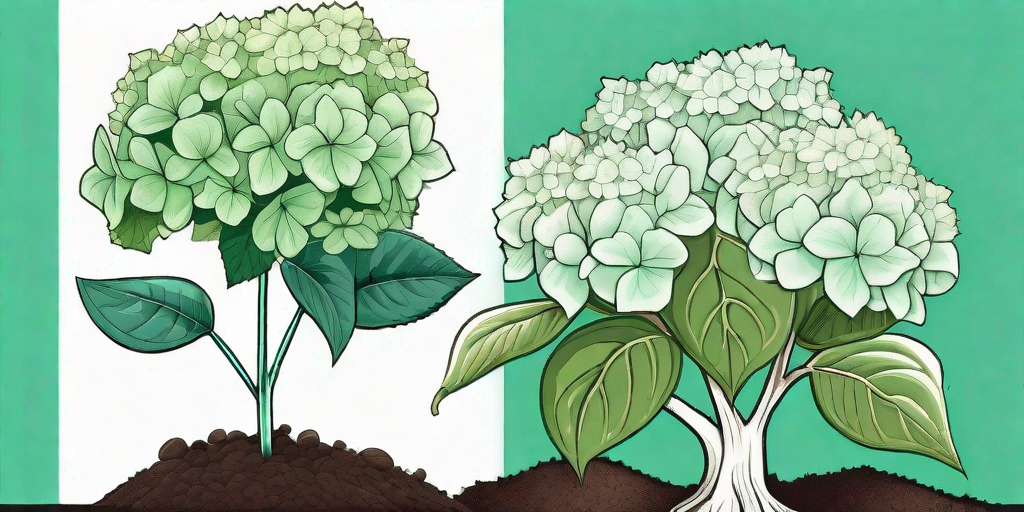
Welcome, fellow green thumbs and dirt enthusiasts! Today, we're diving deep into the world of hydrangeas. These beautiful, blooming wonders can be a bit tricky to root, but fear not! This guide will walk you through the process, step by step, so you can transform your garden into a hydrangea haven.
Understanding the Hydrangea
Before we get our hands dirty, let's take a moment to appreciate the hydrangea in all its glory. Originating from Asia and the Americas, these plants are known for their large, stunning flower heads. But did you know that the color of a hydrangea's blooms can change based on the pH level of the soil? It's true! Acidic soil will give you blue flowers, while alkaline soil will produce pink blooms. It's like a science experiment right in your garden!
Hydrangeas are also deciduous plants, meaning they lose their leaves in the winter. But don't worry, they'll be back in full force come spring. Now that we've covered the basics, let's get to the fun part: rooting your hydrangeas.
Rooting Hydrangeas: The Step-by-Step Guide
Rooting hydrangeas doesn't require a degree in botany, but it does require patience, care, and a little bit of cheekiness. So, roll up your sleeves, put on your gardening gloves, and let's get started.
Step 1: Choosing the Right Cutting
The first step in rooting hydrangeas is choosing the right cutting. You'll want to select a stem from a healthy hydrangea plant that has not yet flowered. The ideal cutting is about 5-6 inches long and has at least two sets of leaves.
Once you've found the perfect cutting, use a sharp, clean knife to cut the stem at a 45-degree angle. This will increase the surface area for rooting. And remember, the sharper the knife, the cleaner the cut, and the happier your hydrangea will be.
Step 2: Preparing the Cutting
Now that you have your cutting, it's time to prepare it for rooting. Start by removing the lower leaves and any flower buds. This will allow the cutting to focus its energy on developing roots.
Next, dip the cut end of the stem into a rooting hormone. This isn't a mandatory step, but it can help speed up the rooting process. After all, we're not getting any younger, are we?
Step 3: Planting the Cutting
Now comes the fun part: planting the cutting. Fill a pot with a mixture of perlite and peat moss, then make a hole in the center. Place the cutting in the hole, ensuring the cut end is well covered. Then, gently firm the soil around the cutting.
Place the pot in a location that gets indirect sunlight and keep the soil consistently moist. In about 2-4 weeks, your cutting should start to develop roots. Congratulations, you're officially a hydrangea parent!
Common Mistakes to Avoid
As with any gardening endeavor, there are a few common mistakes to avoid when rooting hydrangeas. Let's go through them, shall we?
Overwatering
While hydrangeas love water, overwatering can lead to root rot. So, resist the urge to water your cutting every time you pass by. Instead, aim for consistently moist soil.
Using the Wrong Soil
Hydrangeas prefer well-drained soil, so avoid using heavy, clay-based soils. Instead, opt for a mixture of perlite and peat moss. Your hydrangeas will thank you.
Not Enough Light
While hydrangeas don't like direct sunlight, they do need some light to grow. So, make sure your cuttings are in a location that gets indirect sunlight.
Frequently Asked Questions
Now, let's tackle some of the most common questions about rooting hydrangeas.
When is the best time to root hydrangeas?
The best time to root hydrangeas is in the early summer, when the plant is growing vigorously and the stems are flexible.
How long does it take for a hydrangea cutting to root?
It typically takes about 2-4 weeks for a hydrangea cutting to root, but it can take longer depending on the conditions.
Can I root a hydrangea cutting in water?
While it's possible to root a hydrangea cutting in water, it's generally better to root it in soil. This is because water-rooted cuttings can have a harder time adapting to soil once they're planted.
Conclusion
And there you have it, a foolproof guide to rooting hydrangeas. With a bit of patience and care, you'll be well on your way to creating a hydrangea haven in your garden. So, get out there and get your hands dirty!















